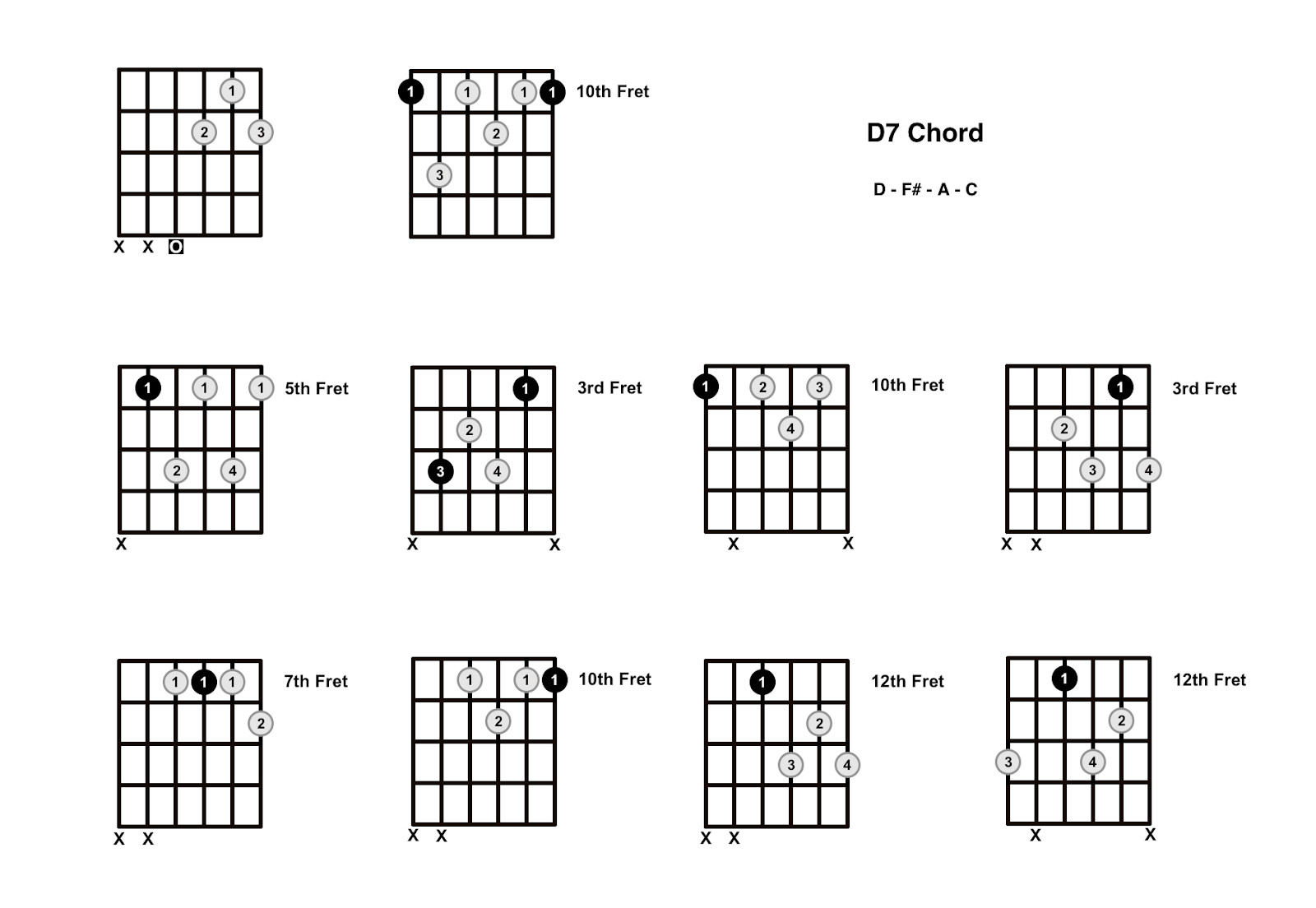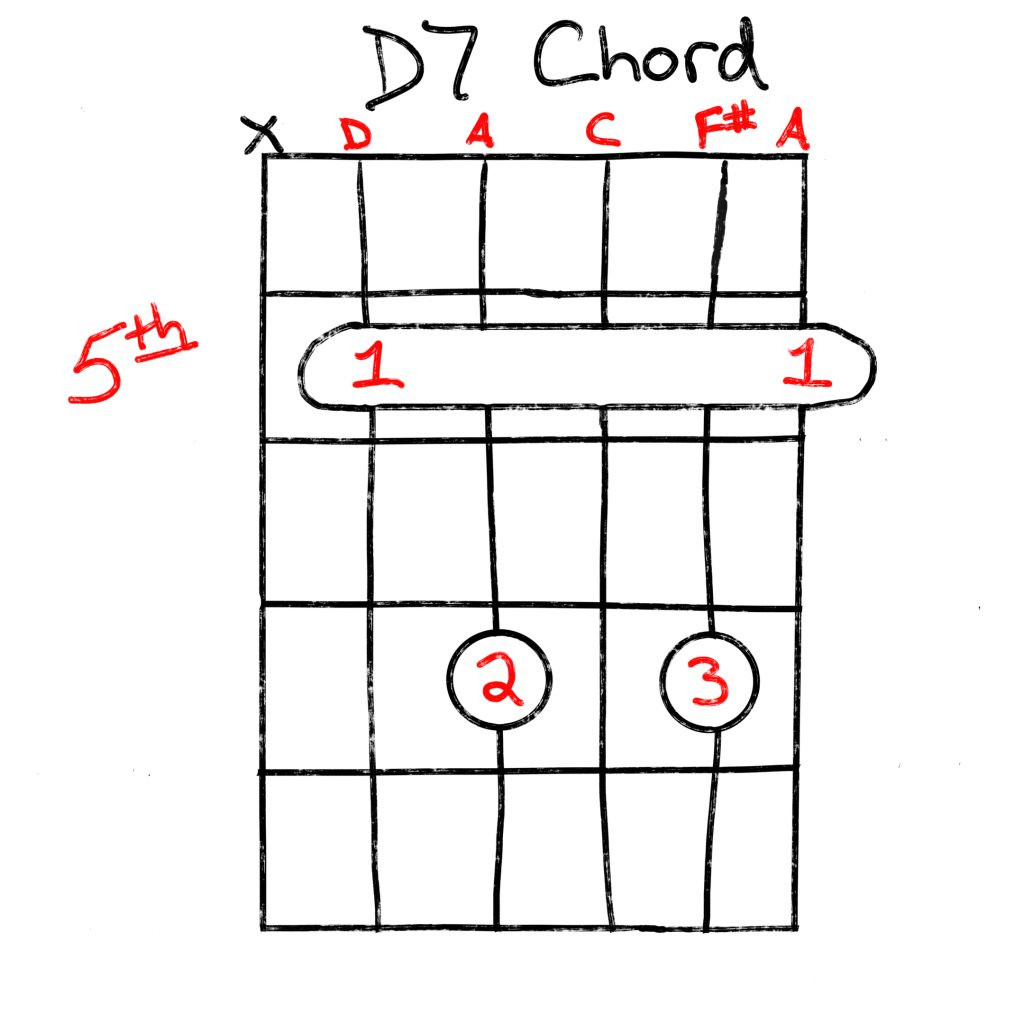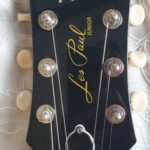In the vast world of guitar chords, the D7 chord stands out as a versatile and essential tool for any guitarist. Whether you’re exploring blues riffs, jazz harmonies, or adding a touch of soul to your rock progressions, understanding and mastering the D7 guitar chord is crucial. If you’ve ever encountered this chord and felt unsure, or you’re simply looking to expand your chord vocabulary, you’ve come to the right place. This guide will provide a comprehensive overview of the D7 chord, explaining its construction, various ways to play it, and its application in popular music genres.
The D7 chord, also known as the D dominant seventh chord, is a variation of the basic D major chord. Dominant seventh chords like the D7 are known for their rich, complex sound and their ability to create a sense of anticipation and resolution in music. Unlike the B7 guitar chord which might have a slightly different flavor, the D7 has its own unique character that is widely used across genres. Its distinctive sound makes it a favorite in blues, jazz, country, and even pop music, adding depth and emotion to countless songs. Learning the D7 chord will significantly broaden your musical palette and allow you to play a wider range of songs and styles.
So, why is the D7 chord so important for guitarists? Beyond its popularity in various genres, the D7 chord plays a fundamental role in chord progressions. It often functions as a dominant chord, creating tension that naturally resolves to a tonic chord, typically a G major chord in the key of C major, or a D major chord in the key of G major. This dominant function is what gives the D7 its characteristic “pull” and makes it so effective in creating musical interest and movement. For any aspiring guitarist, mastering the D7 chord is not just about learning another shape; it’s about unlocking a fundamental building block of musical harmony.
Let’s dive into the practical aspects and explore the most common and effective ways to play the D7 chord on your guitar.
Decoding the D7 Chord: Notes and Construction
Before we get into finger positions, understanding the theory behind the D7 chord can be incredibly helpful. The D7 chord is a four-note chord, built upon the D major scale. It comprises the following notes:
- Root: D
- Major Third: F#
- Perfect Fifth: A
- Minor Seventh (flatted seventh): C
Essentially, the D7 chord takes a D major chord (D, F#, A) and adds the minor seventh interval (C). This added note is what gives the D7 chord its dominant seventh character and its slightly bluesy, jazzy flavor compared to a plain D major chord.
Understanding these notes can help you visualize the chord on the fretboard and even explore different inversions and voicings in the future. For now, let’s focus on the most common and beginner-friendly ways to play the D7 chord.
Easiest Way to Play D7: The Open Position Chord
The most common and often the first D7 chord shape that guitarists learn is the open position D7. This version is relatively easy to fret and is used extensively in countless songs. If you are already familiar with the open D major chord, you’ll find the D7 a simple adjustment.
Finger Placement for Open D7 Chord:
Let’s break down the finger placement step-by-step:
- Index Finger (1st Finger): Place your index finger on the 2nd fret of the G string (3rd string from the thickest).
- Middle Finger (2nd Finger): Place your middle finger on the 2nd fret of the high E string (thinnest string).
- Ring Finger (3rd Finger): Place your ring finger on the 3rd fret of the B string (2nd thinnest string).
 D7 Chord Open Position Diagram
D7 Chord Open Position Diagram
Strumming Pattern: When strumming the open D7 chord, be sure to avoid hitting the low E string (thickest string). Start your strum from the A string (5th string) downwards. This is a crucial detail to ensure the chord sounds clean and correct.
Tips for Beginners:
- Finger Curvature: Ensure your fingers are curved so that you are only pressing down on the intended strings and not muting adjacent strings.
- Pressure: Apply just enough pressure to fret the strings cleanly without pressing too hard. Over-pressing can cause strain and doesn’t improve the sound.
- Strumming Accuracy: Practice strumming slowly at first, focusing on avoiding the low E string. Accuracy is more important than speed when you are learning.
Variations of the Open D7 Chord
While the standard open D7 chord is the most common, there are slight variations that utilize open strings and can offer different tonal colors.
1. D7 Chord with Open A String: This is the standard open D7 described above. It utilizes the open A string as the root note in the bass.
2. D7 Chord with Open G String: This variation is less common for beginners but worth knowing. It involves a slight finger change while still maintaining an open chord shape.
* **Index Finger:** 2nd fret of the G string.
* **Middle Finger:** 3rd fret of the B string.
* **Ring Finger:** 2nd fret of the high E string.This voicing has a slightly different feel due to the change in finger placement and the emphasis on the open G string in the chord. Experiment with both variations to see which you prefer.
Barre Chord D7: Expanding Your Reach
As you progress, learning barre chords is essential for playing up and down the guitar neck. The barre chord D7 allows you to play the D7 chord shape in different positions, opening up more musical possibilities.
Barre Chord D7 Shape:
To play a barre D7 chord, we’ll use a common barre chord shape rooted on the 5th string (A string).
- Barre with Index Finger: Barre your index finger across all six strings at the 5th fret. This barre acts as the new “nut” of the guitar, effectively transposing the open chord shape up the neck.
- Ring Finger: Place your ring finger on the 7th fret of the D string (4th string).
- Pinky Finger: Place your pinky finger on the 7th fret of the G string (3rd string).
- Middle Finger: Place your middle finger on the 6th fret of the B string (2nd string).
 D7 Barre Chord Diagram
D7 Barre Chord Diagram
Explanation: This barre chord shape is based on a movable A7 shape. By barring at the 5th fret and using this shape, you are effectively playing a D7 chord. Barre chords can be challenging at first, so practice your barre technique to ensure a clean and buzzing-free sound.
Moving the Barre Chord: The beauty of barre chords is their portability. You can move this D7 barre chord shape up and down the neck to play other dominant 7th chords. For example:
- 7th Fret Barre: E7 chord
- 8th Fret Barre: F7 chord
- 10th Fret Barre: G7 chord
Understanding barre chords greatly expands your ability to play dominant 7th chords in various keys and positions.
Songs That Feature the D7 Chord
One of the best ways to solidify your understanding of a chord is to play it in the context of actual songs. The D7 chord is featured in a wide range of popular songs across different genres. Here are a few examples to get you started:
-
“Can’t Help Falling in Love” – Elvis Presley: This timeless classic, released in 1961, features a beautiful and simple chord progression where the D7 chord plays a crucial role, particularly in the chorus. The gentle guitar accompaniment makes it an excellent song for practicing smooth chord changes involving the D7. Listen on YouTube
-
“Ain’t No Sunshine” – Bill Withers: Released in 1971, this soulful song is instantly recognizable for its repeating chord progression, which prominently features the D7 chord. “Ain’t No Sunshine” provides a fantastic opportunity to practice playing the D7 chord repeatedly and smoothly transitioning to other chords in the progression. Listen on YouTube
-
“Brown Eyed Girl” – Van Morrison: A classic from 1967, “Brown Eyed Girl” is an upbeat and joyful song that heavily utilizes the D7 chord. Its catchy melody and prominent use of the D7 make it a fun and engaging song to learn and practice. Mastering the D7 in “Brown Eyed Girl” will enhance your rhythm guitar skills and chord vocabulary. Listen on YouTube
These are just a few examples, and as you explore more music, you’ll discover the D7 chord in countless other songs across blues, jazz, country, rock, and pop.
Frequently Asked Questions about the D7 Guitar Chord
How do I use the D7 chord in a chord progression?
The D7 chord is most commonly used as a dominant chord, leading to a chord a perfect fourth above it. In the key of G major, D7 naturally resolves to G major. In the key of C major, D7 might resolve to G major or G minor. Experiment with progressions like:
- G – D7 – G
- C – D7 – G
You’ll hear the characteristic tension and resolution that the D7 chord provides.
Can I substitute the D7 chord for a D major chord?
Yes, in many cases, you can substitute a D7 for a D major chord. The D7 adds a bit more color and tension, which can make the progression more interesting and dynamic. However, the choice depends on the specific musical context and the desired feel. Sometimes a simple D major is all you need, while other times, the D7 will add that extra touch of flavor.
What other chords combine well with the D7 chord?
The D7 chord works well with a variety of chords, depending on the key and style of music. Common chords to pair with D7 include:
- G major: The most common resolution chord for D7.
- G minor: Creates a bluesier or minor feel after the D7.
- E minor: Can be used in progressions to create movement and interest.
- A minor: Can create a jazzy or more complex harmonic feel.
Experiment with these and other chords to discover the many possibilities of the D7 chord in your playing.
Conclusion: Embrace the Power of the D7 Chord
The D7 guitar chord is more than just another chord to learn; it’s a gateway to a richer and more expressive musical vocabulary. From its essential role in blues and jazz to its subtle presence in pop and rock, the D7 chord is a versatile tool for any guitarist. By mastering the open position, exploring barre chord shapes, and understanding its use in songs and chord progressions, you’ll unlock a new dimension in your guitar playing. So, pick up your guitar, practice these shapes, and start incorporating the D7 chord into your musical journey. You’ll be amazed at the difference it makes!


